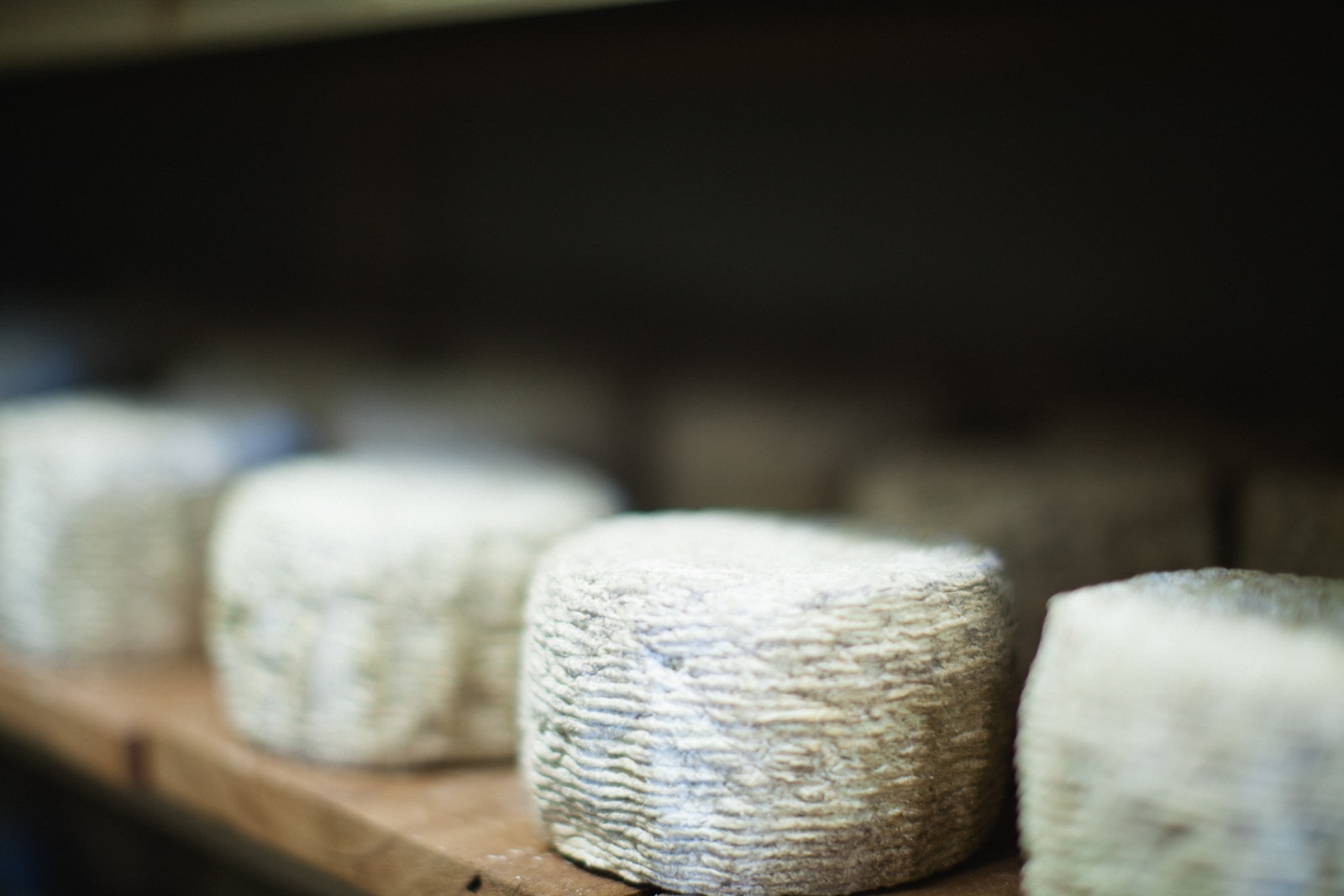
Shredded cheese is a staple ingredient in many households. It can be used to top off pizzas, salads, and even tacos. However, it’s not uncommon to find a bag of shredded cheese in the back of the fridge that has been sitting there for a while. The question is, how do you know if it’s still good to eat?
The first thing to look for when determining if shredded cheese is bad is the appearance. If there is any mold or discoloration, it’s best to toss it out. Additionally, if the cheese has a slimy texture or emits a foul odor, it’s a clear sign that it has gone bad. It’s important to note that even if there are no visible signs of spoilage, the cheese can still be bad if it has been stored improperly or for too long.
To ensure that shredded cheese stays fresh for as long as possible, it’s important to store it properly. Cheese should be stored in an airtight container in the fridge, away from any moisture or heat sources. It’s also best to use the cheese within a few days of opening the bag. By following these guidelines, you can prevent the cheese from going bad and enjoy it in your favorite dishes.
Table of Contents
Identifying Bad Shredded Cheese

When it comes to shredded cheese, it can be challenging to tell if it has gone bad. However, there are a few ways to identify bad shredded cheese. Here are some of the ways to tell if shredded cheese is bad:
Visual Inspection
One of the easiest ways to tell if shredded cheese is bad is to visually inspect it. Look for any signs of mold, which can appear as white or blue spots on the cheese. If you see mold, discard the cheese immediately. Additionally, if the cheese has an unusual texture or color, it may also be a sign that it has gone bad.
Smell Test
Another way to tell if shredded cheese is bad is to use your sense of smell. Give the cheese a sniff and see if it has an unpleasant odor. If the cheese smells sour, has an ammonia-like odor, or has an off odor, it may be a sign that it has gone bad.
Taste Test
While not always the most pleasant method, a taste test can also help you determine if shredded cheese is bad. If the cheese tastes bitter or has an unusual flavor, it may be a sign that it has gone bad. Additionally, if the cheese feels slimy or has a gritty texture, it may also be a sign that it is no longer safe to eat.
Overall, it is essential to be cautious when consuming shredded cheese. If you notice any signs of mold, texture change, or an unpleasant odor or taste, it is best to discard the cheese to avoid the risk of food poisoning.
Types of Shredded Cheese and Their Shelf Life

When it comes to shredded cheese, there are different types that can affect its shelf life. Here are two main types of shredded cheese and their respective shelf life:
Hard Cheeses
Hard cheeses, such as Parmesan, Cheddar, and Pecorino, have a longer shelf life than soft cheeses. Shredded hard cheeses can last up to six months if stored properly. It is best to keep them in an airtight container in the refrigerator at a temperature of 40°F or below.
Soft Cheeses
Soft cheeses, such as mozzarella and Brie, have a shorter shelf life than hard cheeses. Shredded soft cheeses can last up to two weeks if stored properly. It is best to keep them in an airtight container in the refrigerator at a temperature of 40°F or below.
It is important to note that the shelf life of shredded cheese can vary depending on how it was processed and packaged. Always check the expiration date and use-by date on the package to ensure its freshness. If there are any signs of mold or an unpleasant odor, it is best to discard the shredded cheese.
Proper Storage of Shredded Cheese

When it comes to shredded cheese, proper storage is crucial in order to maintain its quality and prevent spoilage. Here are some guidelines on how to store shredded cheese:
Refrigerator Storage
Shredded cheese should be stored in the refrigerator as soon as possible after opening the package. It is best to transfer the cheese into an airtight container or a resealable plastic bag to keep it fresh. The container or bag should be labeled with the date of opening to help keep track of its freshness.
Freezer Storage
Shredded cheese can also be stored in the freezer for longer periods of time. It is important to note that freezing can affect the texture of the cheese, so it is best to use it for cooking rather than for eating on its own. When freezing shredded cheese, it is recommended to place it in an airtight container or a resealable plastic bag. The cheese should be used within six months of freezing.
Homemade vs Store-Bought
Homemade shredded cheese should be stored in the same manner as store-bought shredded cheese. However, it is important to note that homemade shredded cheese may not have the same preservatives as store-bought shredded cheese, so it may have a shorter shelf life. Additionally, freshly grated cheese tends to spoil faster than packaged shredded cheese because it has not been treated with preservatives.
Overall, proper storage of shredded cheese is crucial in maintaining its quality and preventing spoilage. By following these guidelines, shredded cheese can be enjoyed in a variety of dishes for a longer period of time.
Health Risks Associated with Bad Shredded Cheese

Consuming bad shredded cheese can lead to various health risks. In this section, we will discuss the two most common health risks associated with bad shredded cheese.
Food Poisoning
One of the most common health risks associated with bad shredded cheese is food poisoning. Food poisoning occurs when you consume food that is contaminated with harmful bacteria, viruses, or parasites. Bad shredded cheese can contain bacteria such as Salmonella, Listeria, and E. coli, which can cause food poisoning.
Symptoms of food poisoning include vomiting, diarrhea, abdominal pain, fever, and chills. These symptoms can range from mild to severe and can last for a few hours to several days. In severe cases, food poisoning can lead to dehydration, hospitalization, and even death.
To avoid food poisoning, it is important to check the expiration date of the shredded cheese before consuming it. If you notice any signs of spoilage such as mold, discoloration, or a sour smell, discard the cheese immediately.
Brucellosis
Brucellosis is another health risk associated with bad shredded cheese. Brucellosis is a bacterial infection that can be transmitted to humans through the consumption of contaminated dairy products such as cheese.
Symptoms of brucellosis include fever, chills, sweats, weakness, fatigue, joint pain, and headache. These symptoms can last for several weeks or even months. In rare cases, brucellosis can lead to chronic health problems such as arthritis, heart problems, and neurological disorders.
To avoid brucellosis, it is important to only consume cheese from reputable sources. Make sure to properly store shredded cheese in the refrigerator and avoid consuming cheese that has been left out at room temperature for an extended period of time.
In conclusion, consuming bad shredded cheese can lead to various health risks such as food poisoning and brucellosis. It is important to check the expiration date of the cheese, look for signs of spoilage, and only consume cheese from reputable sources to reduce your risk of contracting a foodborne illness.
Preservatives in Shredded Cheese
Shredded cheese is a popular ingredient in many dishes, from pizza to tacos. However, it can be challenging to determine if shredded cheese has gone bad. One factor that can impact the shelf life of shredded cheese is the presence of preservatives.
Preservatives are added to food products to extend their shelf life and prevent the growth of harmful bacteria. In shredded cheese, the most common preservatives used are natamycin, sorbic acid, and calcium propionate.
Natamycin is a natural antifungal agent that is used to prevent mold growth in shredded cheese. It is considered safe for consumption and has been approved by the FDA. Sorbic acid and calcium propionate are also used to inhibit the growth of mold and bacteria in shredded cheese.
It is important to note that not all shredded cheese contains preservatives. Some brands offer preservative-free options, which may have a shorter shelf life than those with preservatives.
Pre-shredded cheese, which is widely available in grocery stores, often contains preservatives to extend its shelf life. However, pre-shredded cheese may not be as fresh as cheese that is shredded at home. This is because pre-shredded cheese is often coated with a layer of cellulose powder or other anti-caking agents to prevent clumping. This coating can affect the flavor and texture of the cheese and may also impact its shelf life.
In summary, preservatives are commonly used in shredded cheese to extend its shelf life and prevent the growth of harmful bacteria. Consumers should be aware of the preservatives used in their shredded cheese and opt for preservative-free options if desired. Additionally, pre-shredded cheese may not be as fresh as cheese that is shredded at home.
When to Discard Shredded Cheese
Shredded cheese is a common ingredient in many dishes, but it can be difficult to tell when it has gone bad. Here are some signs to look for when deciding whether to discard shredded cheese:
- Mold: If you see mold on your shredded cheese, it’s time to throw it out. Mold can grow on cheese even if it’s been refrigerated, and it can be dangerous to consume.
- Off smell: If your shredded cheese smells sour or has an unpleasant odor, it’s likely gone bad. Fresh cheese should have a mild, pleasant aroma.
- Slimy texture: If your shredded cheese feels slimy or sticky, it may have gone bad. Fresh cheese should have a dry, crumbly texture.
- Expiration date: Check the expiration date on your shredded cheese. If it has passed, it’s best to err on the side of caution and discard it.
It’s important to note that if you’re in doubt about whether your shredded cheese is still good, it’s better to be safe than sorry and throw it out. Consuming spoiled cheese can lead to food poisoning and other health problems.
In summary, when deciding whether to discard shredded cheese, look for mold, an off smell, a slimy texture, and check the expiration date. When in doubt, it’s better to throw it out.